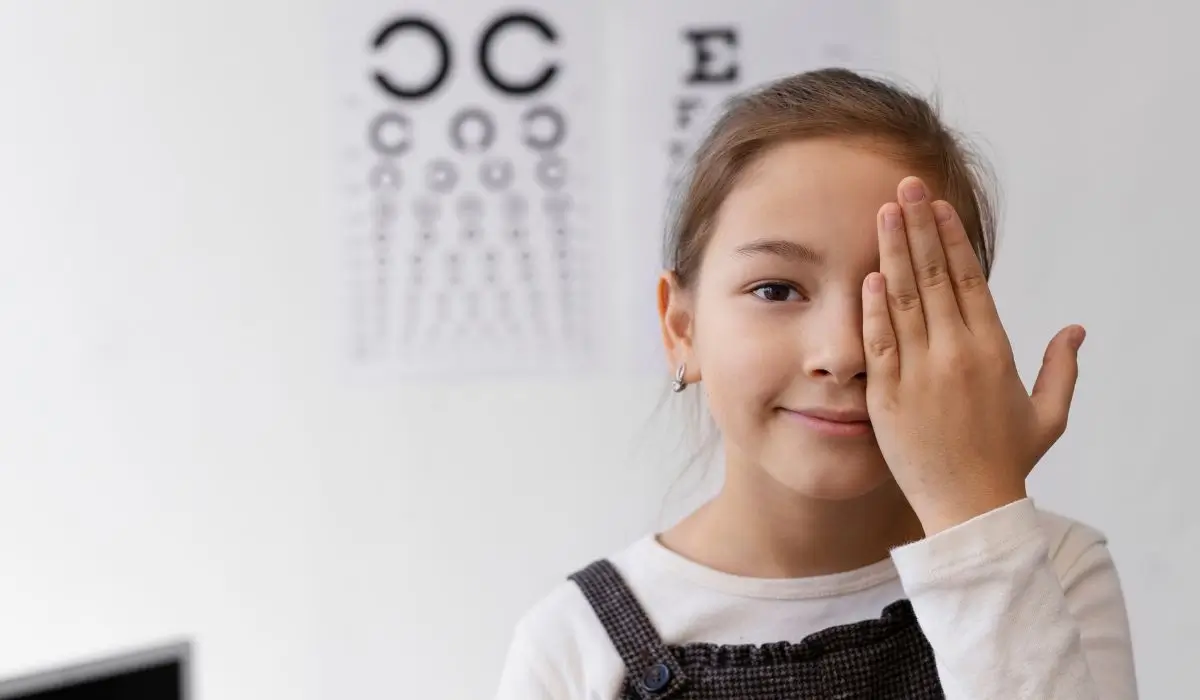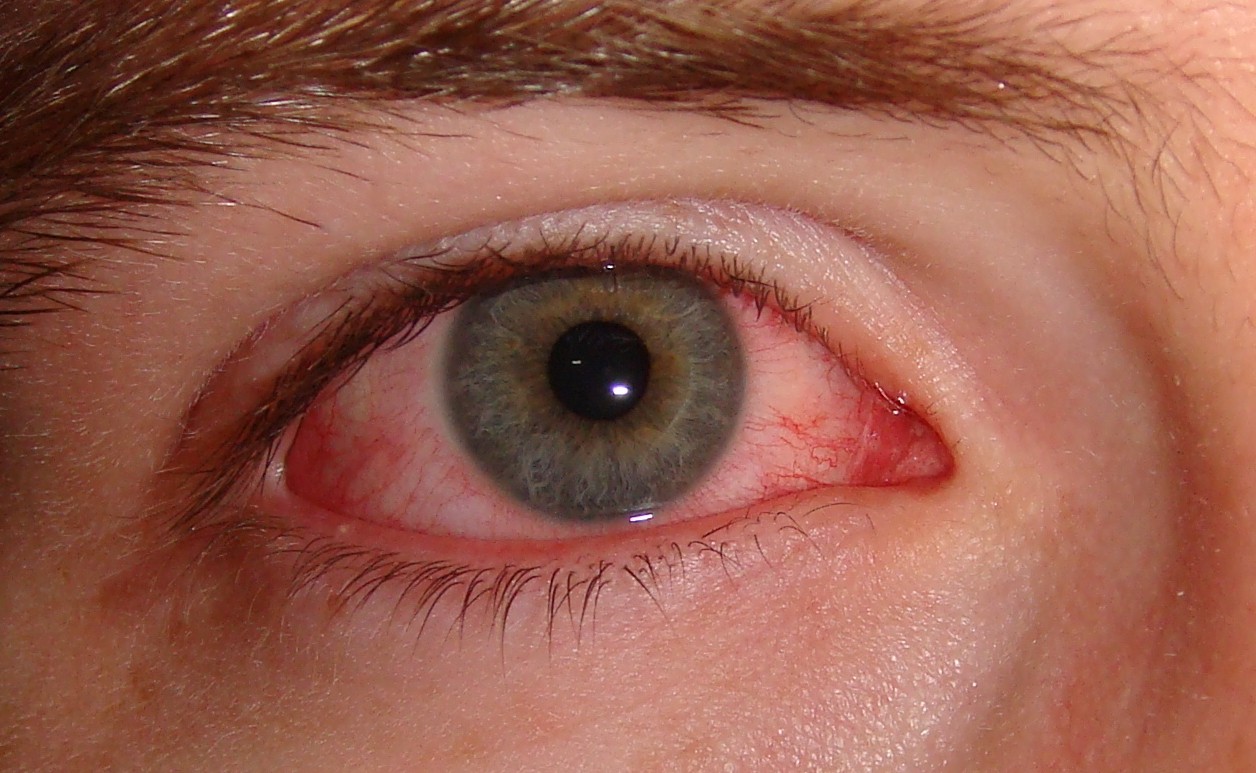
Pediatric Eye Health in 2025: Key Signs Your Child Needs Glasses
How to Identify and Address Pediatric Eye Health Issues in 2025
Clear vision is essential for your child’s growth, education, and well-being. Many children experience vision problems that can go unnoticed, affecting school performance and daily activities. In 2025, with screen time increasing, maintaining pediatric eye health is more critical than ever. Early detection through regular checkups helps prevent long-term complications.
DeCarlo Optometry provides a wide range of services to support children’s eye care. From routine eye exams to specialized treatments, we ensure comprehensive care. Learn more about our services or read what families say in our client testimonials. If you’re a new patient, access the new patient form.
Why Pediatric Eye Health Matters More Than Ever?
Children today face more challenges to their vision than in previous generations. Increased screen time, environmental factors, and genetic predispositions all contribute to a higher risk of eye issues. Understanding these factors can help parents take timely action.
The Effects of Digital Screens on Vision
With children spending an average of 4-6 hours a day on digital devices, the risk of Computer Vision Syndrome (CVS) is rising. This condition can lead to symptoms such as blurred vision, dry eyes, and headaches. According to studies, 58% of children experience digital eye strain. Limiting screen time, encouraging frequent breaks, and adjusting screen brightness can mitigate these risks.
Impact of Outdoor Time on Vision Development
Studies from the National Eye Institute (NEI) show that children who spend at least 90 minutes outdoors daily are less likely to develop myopia (nearsightedness). Natural light helps regulate eye growth, reducing the risk of vision problems. Simple activities like playing outside or engaging in sports can contribute to healthier vision and overall pediatric eye health.
The Importance of Early Diagnosis and Treatment
Certain conditions, such as amblyopia (lazy eye) and strabismus (crossed eyes), are best treated early. Research indicates that treatment before the age of 7 leads to significantly better outcomes. Left untreated, these conditions can result in permanent vision loss. Regular exams ensure early diagnosis and timely treatment.
Nutrition and Eye Development
Proper nutrition plays a vital role in maintaining healthy vision. Nutrients like omega-3 fatty acids, vitamin A, and lutein support eye development. Foods such as carrots, leafy greens, and fish provide essential vitamins and minerals. A balanced diet helps reduce the risk of developing conditions like dry eyes and night blindness.
Environmental Factors and Eye Safety
Pollution, UV radiation, and allergens can impact eye health. The World Health Organization (WHO) reports that exposure to UV rays increases the risk of cataracts. Wearing UV-blocking sunglasses and hats can protect your child’s eyes from harmful rays. Additionally, practicing proper hygiene helps prevent infections like conjunctivitis (pink eye).


Key Signs Your Child May Need Glasses
Recognizing early indicators of vision issues in children is crucial for timely intervention. Here are some important signs that may suggest your child needs corrective lenses:
1. Frequent Rubbing of Eyes
If your child frequently rubs their eyes, especially during or after activities like reading or using screens, it may indicate fatigue or difficulty focusing. Eye rubbing can be a response to straining caused by unaddressed refractive errors or conditions like allergic conjunctivitis.
2. Closing One Eye to See Clearly
Children who cover or close one eye when reading or watching TV may be trying to reduce double vision. This behavior can point to conditions like strabismus (misalignment of the eyes) or anisometropia (different prescription strengths between the eyes).
3. Misjudging Distances or Clumsiness
If your child frequently bumps into furniture, misjudges distances when reaching for objects, or struggles with coordination, they might have depth perception issues. These problems can impact children’s vision and are often related to conditions like amblyopia (lazy eye).
4. Short Attention Span for Visual Tasks
A child who loses interest in tasks that require visual focus, such as puzzles, reading, or drawing, may be experiencing vision difficulties. The inability to maintain visual attention can be linked to farsightedness (hyperopia) or other focusing issues that cause discomfort.
5. Tilting the Head or Turning the Face
Head tilting or face turning while reading or looking at distant objects could indicate that your child is trying to adjust their line of sight. This behavior may suggest astigmatism, where the curvature of the eye causes blurred vision at certain angles.
6. Light Sensitivity and Excessive Tearing
Sensitivity to light, known as photophobia, combined with excessive tearing, may signal underlying eye conditions. These can range from mild irritations to serious problems like corneal abrasions or uveitis (eye inflammation). Protecting pediatric eye health includes addressing these symptoms early.
7. Difficulty Recognizing Faces or Objects
If your child struggles to recognize people or objects from a distance, it may indicate myopia (nearsightedness). According to a recent U.S. study, approximately 36% of youth have myopia, with 41% of those cases occurring in urban areas and 16% in rural regions. The World Health Organization predicts that by 2050, nearly 50% of the world’s population will be myopic, with about 10% experiencing severe cases.
8. Frequent Eye Squinting in Bright Light
Squinting in bright light, especially outdoors, can signal a need for corrective lenses. It may indicate uncorrected refractive errors like hyperopia (farsightedness) or even early cataract development in rare cases. Squinting helps reduce glare, temporarily improving focus.
9. Poor Hand-Eye Coordination During Sports
If your child struggles with sports activities that require quick reactions, such as catching a ball, poor hand-eye coordination could be to blame. Vision issues like depth perception problems or uncorrected astigmatism can affect their ability to track moving objects accurately.


Common Eye Procedures for Children
Detecting and addressing vision issues in children often requires specific procedures tailored to their needs. These procedures play an important role in diagnosing, managing, and treating various conditions to support pediatric eye health.
-
Visual Acuity Test
A visual acuity test measures how well a child can see at different distances. Using a Snellen chart or picture chart, children identify letters, numbers, or symbols from varying distances. This test helps detect refractive errors such as nearsightedness, farsightedness, and astigmatism. Results are recorded as a fraction, like 20/20 for normal vision or 20/40 for reduced clarity.
-
Retinoscopy
Retinoscopy involves shining light into the eyes to measure refractive errors. The pediatric eye doctor observes how the light reflects off the retina. This method is especially useful for young children who may not clearly communicate their vision issues. It provides an accurate prescription for corrective lenses.
-
Cycloplegic Refraction
In cycloplegic refraction, special eye drops temporarily relax the focusing muscles. This allows for a precise measurement of the eye’s refractive error without interference. It is particularly effective for diagnosing latent farsightedness or when eye strain is a concern.
-
Cover Test
The cover test identifies alignment issues like strabismus (crossed eyes) or amblyopia (lazy eye). During the test, the doctor covers one eye at a time while the child focuses on an object. If one eye shifts or struggles to focus, it may indicate a misalignment that requires treatment.
-
Slit-Lamp Examination
A slit-lamp examination offers a detailed view of the cornea, iris, and lens. The doctor uses a microscope and a thin beam of light to detect issues such as corneal abrasions or early cataract development. This procedure is quick, painless, and provides essential insights into pediatric eye health.
-
Scleral Contact Lens Fitting
For children with keratoconus or severe corneal irregularities, scleral contact lenses can improve vision significantly. These lenses are larger and rest on the sclera (the white part of the eye), offering comfort and effective management for complex corneal conditions.
-
Eye Dilation
Dilation involves applying drops to widen the pupils, allowing the doctor to examine the retina and optic nerve thoroughly. This procedure helps diagnose serious conditions like glaucoma and diabetic retinopathy. Although temporary blurriness and light sensitivity occur, it is a vital part of maintaining overall eye health.
-
Vision Therapy
Vision therapy is a structured program designed to correct visual-motor and perceptual issues. It includes eye exercises, activities, and specialized tools to improve skills like tracking, focusing, and coordination. This therapy is particularly effective for children with convergence insufficiency or lazy eye.
These common eye procedures play an essential role in protecting children’s vision and ensuring their long-term visual health.
Protecting Pediatric Eye Health: Taking the Next Steps for Clear Vision
Protecting your child’s vision is an investment in their overall development and quality of life. Routine eye exams, early detection of issues, and effective treatments are essential for maintaining healthy vision. With increased screen time and environmental factors, taking proactive steps to care for your child’s eyes is more important than ever.
DeCarlo Optometry has been a trusted provider of pediatric eye doctor since 1989. Led by Dr. DeCarlo, a highly experienced optometrist, the practice offers services ranging from routine eye exams to advanced treatments like keratoconus management and myopia control. The office features state-of-the-art technology, including the Topcon Maestro retinal scanner, ensuring accurate diagnosis and effective care.
Don’t wait for vision problems to affect your child’s daily life. Prioritize their vision health today by scheduling an appointment with us. Book an appointment online or call us at 714-996-1136 to learn more about our eye care services. Access helpful information in our FAQs. New patients can fill out the new patient form to get started with exceptional eye care.
